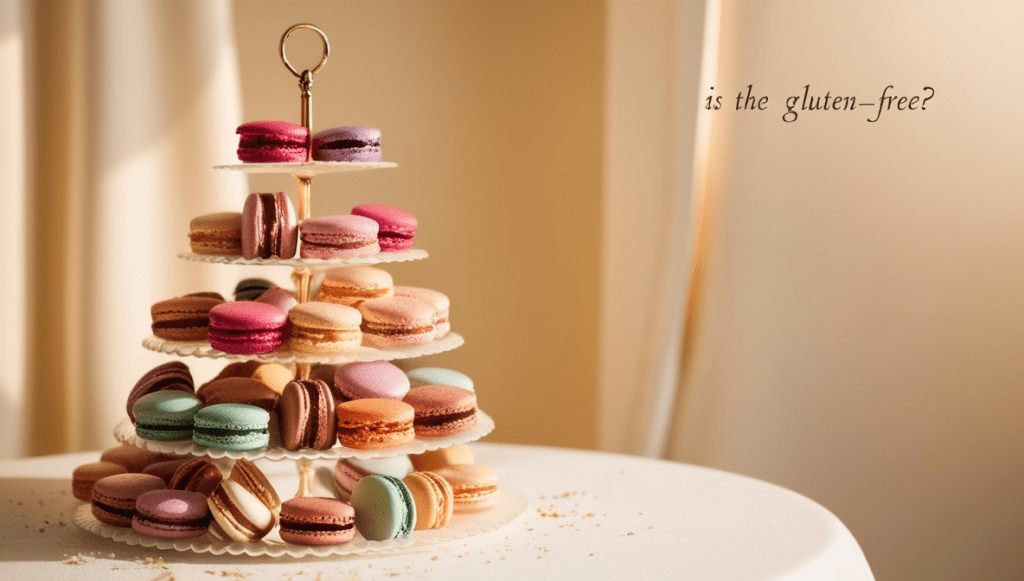Macarons, the delightful French confections with a delicate, crispy shell and a soft, chewy interior, have become a favorite treat worldwide. With their variety of colors and flavors, they’re not only a feast for the eyes but also for the taste buds. But for those with gluten sensitivities or celiac disease, the big question is: are macarons gluten-free?
The short answer is: yes, macarons are generally gluten-free! However, there are a few important details to keep in mind to ensure that the macarons you’re enjoying are indeed safe for a gluten-free diet. Let’s dive into what makes macarons gluten-free, the potential for cross-contamination, and tips on finding gluten-free options.
What Are Macarons Made Of?
Traditional French macarons have a simple ingredient list that doesn’t include gluten. The main ingredients in macarons are:
- Almond Flour: The primary ingredient, almond flour, is naturally gluten-free and provides the delicate, nutty flavor and chewy texture that macarons are known for.
- Egg Whites: Egg whites are used to create the meringue base, giving macarons their characteristic lightness and airy texture.
- Sugar: Both granulated and powdered sugar are used, but neither contain gluten.
- Flavorings and Fillings: Various flavorings (such as vanilla, chocolate, or fruit extracts) and fillings (such as ganache, buttercream, or jam) are added to give each macaron its unique taste. While the basic fillings are usually gluten-free, certain flavors and toppings may contain gluten.
In their purest form, macarons are made without wheat flour or any gluten-containing grains, which makes them naturally gluten-free and safe for people with gluten sensitivities.
Watch Out for Cross-Contamination
While the traditional recipe for macarons is gluten-free, cross-contamination is something to be aware of, especially if the macarons are made in a bakery that also prepares gluten-containing items. Here are some factors to consider:
- Shared Equipment: In some bakeries, macarons may be prepared on shared surfaces or with shared equipment that has also been used for baking goods with gluten.
- Fillings and Toppings: Some bakeries offer unique macaron flavors that may include ingredients containing gluten, such as cookies or malt-based flavorings. Always check with the bakery if you’re unsure.
- Gluten-Containing Variations: Some macarons may have decorative toppings like cookie crumbles or be made with flavored mixes that contain gluten, so it’s essential to verify ingredients, especially with unusual or complex flavors.
How to Find Gluten-Free Macarons
- Check with the Bakery: Many bakeries are well-aware of gluten sensitivities and will specify which of their macarons are gluten-free. If the bakery has strict gluten-free practices, they may even have dedicated equipment and procedures to prevent cross-contamination.
- Look for Certified Gluten-Free Labels: In stores, some packaged macarons come with a certified gluten-free label, which indicates they’ve been made in a gluten-free environment. This label provides added peace of mind for those with severe gluten intolerance or celiac disease.
- Order from Gluten-Free Bakeries: Some bakeries specialize in gluten-free products, which can be a reliable choice for those looking to avoid cross-contamination. A quick online search or call can help confirm if the macarons meet gluten-free standards.
- Make Macarons at Home: If you’re concerned about potential gluten exposure, making macarons at home can be a fun way to control all ingredients. With a few basic ingredients and a little practice, you can create your own gluten-free macarons in a variety of flavors.

Gluten-Free Macaron Flavors to Try
If you’re looking for some gluten-free macaron flavors that typically don’t involve gluten, here are a few popular options:
- Vanilla: A classic flavor made with pure vanilla extract.
- Chocolate: Made with cocoa powder or gluten-free chocolate ganache.
- Raspberry: Filled with raspberry jam or a light fruit-based filling.
- Pistachio: Almond flour and pistachio flavor combine for a nutty taste.
- Lemon: Filled with lemon curd or a zesty buttercream for a refreshing flavor.
When trying flavors like cookies-and-cream, s’mores, or tiramisu, be extra cautious. These flavors may include gluten in the form of cookie pieces or other flavoring agents.
Are Macarons Safe for Gluten-Free Diets?
For the most part, macarons are safe for gluten-free diets because they’re traditionally made without any gluten-containing ingredients. However, due to the possibility of cross-contamination in mixed bakeries or the addition of gluten-containing toppings and fillings, it’s essential to check the ingredients or ask your baker for clarification. Certified gluten-free macarons or products from dedicated gluten-free bakeries offer a safer option for those with celiac disease or serious gluten sensitivities.
Macarons are an indulgent, elegant treat, and with a little attention to detail, you can enjoy these delicious confections as part of a gluten-free lifestyle!
